
by Susie Fahrer | Oct 1, 2020 | Blogs, CEO's Kaleidoscope, Director's Blog, Home Page News
The autumn equinox ushers in the final harvest season and delights with warm hues painting the leaves and landscape.
We watch as the creatures of the natural world busy themselves with preparations for the winter months. I find that the pace of our school community often mirrors this vibrant energy with routines giving way to a lively learning culture. Fall reminds us to surrender to the natural cycle of the seasons knowing that rebirth is just around the corner. As we settle into a rhythm for the school year, acceptance for what needs to be released will help us in birthing something new.
Communication is central to the success of our community. In collaboration with weekly publications like Rainbow Reminders and regular classroom newsletters, Kaleidoscope captures the bigger picture of what is happening on campus and exciting news for Rainbow’s future.
Our opening weeks have created a foundation worth celebrating.
This first month of school has manifested a community rising to its full potential. Teachers are designing innovative and dynamic programming while engaging in person and remote learners, coordinating outdoor education, and crafting meaningful content. Parents are fostering social gatherings through video platforms, collaborating with carpooling, and sharing resources and ideas for navigating learning at home. Rainbow’s Board is engaged in critical visioning to help ensure a thriving school in and beyond these unprecedented times. Eckhart Tolle said, “Acknowledging the good that you already have in your life is the foundation for all abundance.” Thank you all for continually surfacing the beauty of this Rainbow community. I am ever grateful and empowered to witness a community aligned in service to our children.
Moving beyond our foundation leads us to a new layer in our programming.
This time of year we are typically preparing to formally assess our students in grade 3-8 with the CTP (Comprehensive Testing Program) standardized assessment. This year, our initial focus needs to be on establishing healthy and robust learning environments for our students. Implementing testing now would unnecessarily disrupt this process. As a result, we have moved the assessments to a more desirable timeframe. Testing is scheduled to take place from November 30th- December 17th to ensure both cohorts have ample time to complete this experience. In addition, we anticipate offering individualized testing sessions for fully remote learners. We will provide more explicit information about testing protocols and processes in the coming weeks.
We have also discovered the need to more explicitly define guidelines for attendance and participation in remote programming. Teachers will begin working on their narrative reports at the end of October, and it will be important for families and students to understand the frame of evaluation for attendance and participation. An addendum to our COVID-19 Mitigation plan will be released within the week detailing these specific expectations.
Finally, we are exploring the potential for our first on campus community-wide event. Halloween has served as a long standing invitation for festive costuming, family engagement, and joyful gathering. A team of teachers and administrators are working out the details to design an experience that can safely welcome all learners to campus for some aspect of celebration throughout the day. Details will be shared through your classroom newsletters and in collaboration with the parent council, as the specifics are established.
Fostering depth within our mission is a key aspect of our school’s evolution.
In my welcome letter, I introduced our intention to make our curriculum for racial and environmental justice more visible to our families supporting a partnership in learning. Teachers are exploring the Pollyanna Curriculum this year along with the Teaching Tolerance Anti-Bias Framework as tools for surfacing a more explicit curriculum and approach. Families are encouraged to be a part of this work in collaboration with the school. An upcoming opportunity to engage in conversation and contemplation with our community is the Talking to Kids About Race event, on October 18th from 3:30-5:30pm. This event will include a panel of parents of color and parents of children of color from Rainbow, along with an exploration of the Racial Identity Benchmarks sourced from the City and Country School in New York. We look forward to the rich discussions that abound at this annual event.
Our environmental efforts are best captured in the multitude of student-led projects on campus. Preschool has created a viewing station for a Hickory Horned Devil caterpillar found on campus. This will metamorphose into a Regal Moth. Preschool has also established a connection with the Roots Foundation to plan for edible gardens on campus. In partnership with Max and Shaun, our facilities team, Fourth grade is working on relocating their garden beds to the hill by Omega. Fifth grade has reworked their compost stations for maximum efficiency and will have school-wide composting underway soon. The Omega sixth graders are creating invitational spaces for squirrel observation and the seventh and eighth graders are in the process of designing and constructing a pathway to their outdoor learning center, and so much more. The campus has clearly become an enriching tool for investment in the natural domain.
Even with all of the energy focused on the present, it remains critical for us to look ahead.
In the short term, this involves looking beyond October 22nd, when families will reevaluate their remote learning status. Administration will be reaching out soon with a simple survey to collect data about our communities’ intention for the winter months. There has been some buzz from families that the opening of the school year has given them a sense of comfort and they look forward to continuing or transitioning to in person learning. Other families may have a reason to consider or continue with the remote model. A look at our community data will help us determine the most effective path that takes diverse family needs into consideration At this time, we do not imagine a big shift in our approach unless the family data suggests this is advantageous. We will be sharing this survey with you all very soon.
Another part of visioning is ensuring that we are always taking into account the larger, longer term goals of the school. During the 18-19 school year, Rainbow hosted a community-wide summit using the process of Appreciative Inquiry to gather data from our critical stakeholders about the direction of the institution. This led to our most recent Strategic Plan. This document guides the administration in evaluating decisions with a long-term lens on impact and alignment with our community values and vision. I look forward to advancing our progress on these strategic goals in the coming months and years.
May the beauty of fall surround you. May the crisp air refresh you. May the season of harvest be a reminder of the great abundance we share when community is ignited and fellowship is at the heart of our experience.
In Love,
Susie Fahrer
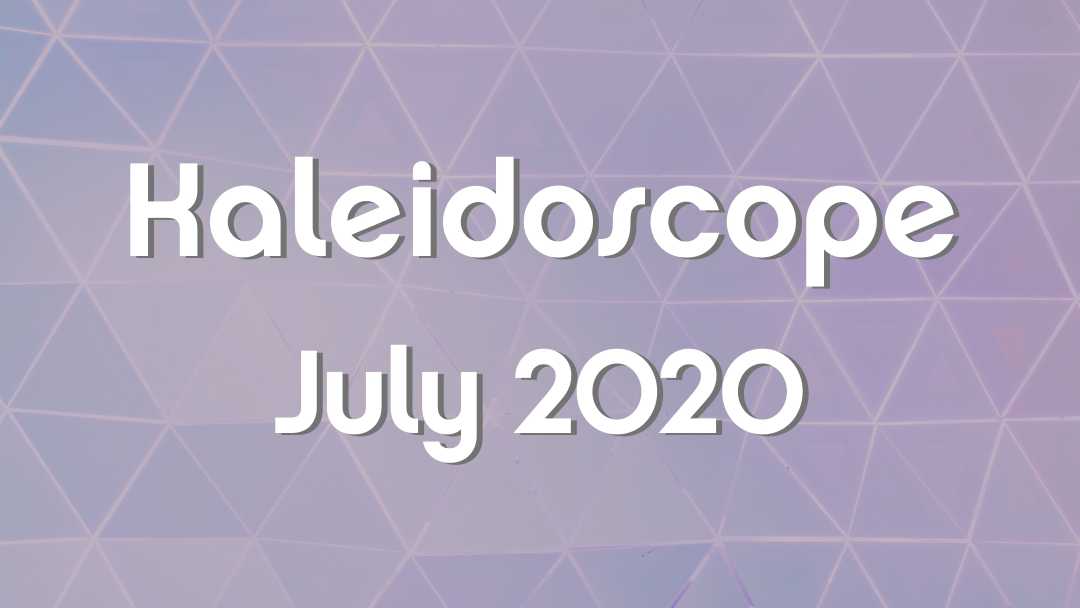
by Susie Fahrer | Jul 10, 2020 | Blogs, CEO's Kaleidoscope, Director's Blog, Home Page News
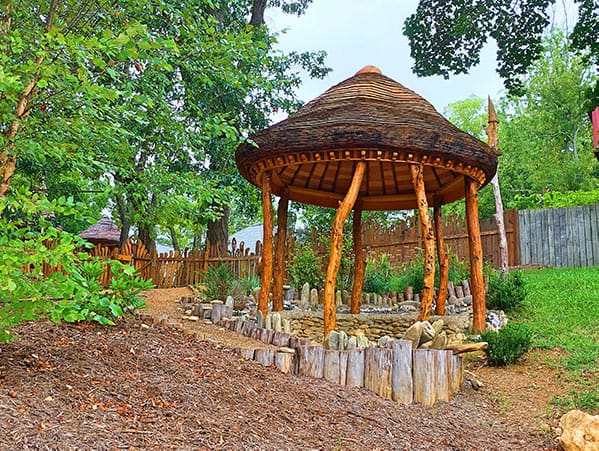
The Many Wonderful Things Happening at Rainbow
The Kaleidoscope Communication
As I sit to write my very first Kaleidoscope to you all, I can’t help but pause to reflect on the very nature and context evoked by the name of this publication. The etymology of the word Kaleidoscope comes from the Greek kalos, meaning beauty; eidos, meaning that which is seen in form or shape; and skepeo meaning to examine. So through my words today and into the future, I hope this communication will serve to explore the evolutionary shape of Rainbow. May it surface the potential and realized beauty that exists within, between, and beyond us all.
Our Reopening Plan
Our Reopening Plan has been shared widely and your feedback has been greatly appreciated. We intend to revise the hybrid model proposed for remote learning. Several families shared that this model would create a burden on transportation, and thus become significantly less viable for them. We are working on a revision and will share this with families soon, along with any additional details to the plan. Of course, it was disappointing that the Governor was not yet able to share more specific direction for schools; however, we are feeling confident that we will respond accordingly when guidance is released.
What will school and campus look like?
In the observance of transparency, many families have been wondering about Rainbow’s decision making process as we define what school and campus will look like in 20-21. Specifically, there is curiosity regarding our obligation to follow governmental guidance. While we do have some liberties as a private institution, all of our decisions are being weighed against best practices, health and safety (both physical and emotional), and the ability to achieve our mission. For example, we contextualize how these recommendations will be experienced by Rainbow’s students, families, and staff. Furthermore, we are a small institution with over 5 acres on our campus. This affords us opportunities to realize physical distancing protocols that can be implemented with developmentally appropriate expectations still intact. In fact, we are building covered outdoor classrooms and by creating these spaces we are advancing the health benefits of being outdoors. In addition, we are supporting our teacher’s capacity to engage inquiry-based discovery and experiential learning. This is a point of grace that we are grateful for as we continue to develop creative and student-centered approaches to our return.
Spiritual Grounding
Calling in our spiritual grounding and resilience, is possibly our most important work right now. We are being required to process radical shifts in societal “norms” as conversations are centered around public health and racial trauma, and in response to both, the transformation of community systems and agencies. At the root of it all is the question: What does it mean to be in community? The depth and breadth of processing necessary to reimagine our world is visceral, powerful, and personal. Rainbow has been criticized in the past for being political in the ways we interpret our mission, and yet as a school we are a central element in offering expertise, safety, and leadership to our children and families who deserve support in unpacking these complexities. Our world continues to offer polarizing narratives that our children need to be able to analyze and think critically about. Rainbow seeks to offer this guidance to our students so that they can engage in healthy identity development and citizenship that embraces their family values, personal perspectives, and empathy for others. As a school, we cannot ignore these realities, but rather we must teach them through developmentally appropriate means.
In Partnership
In order for this type of education to thrive, we must be in partnership with you, and each other, to ensure that every family system is honored and valued. A community education takes into account the fact that we will not all agree, but that we will be able to communicate with compassion, listen with intent to understand, and work together in harmony. I can not overstate the value of being in authentic relationships with one another, that allow us to be vulnerable without fear, so that we may truly realize the power of a united community. Please let this stand as an open invitation to speak with me at any time should you feel tension about Rainbow’s plans moving forward.
May we begin this year, with building connections among us that will realize the beauty that comes from each turn of the Kaleidoscope, adapting and reshaping to find the magic in every moment.
In Love,
Susie Fahrer
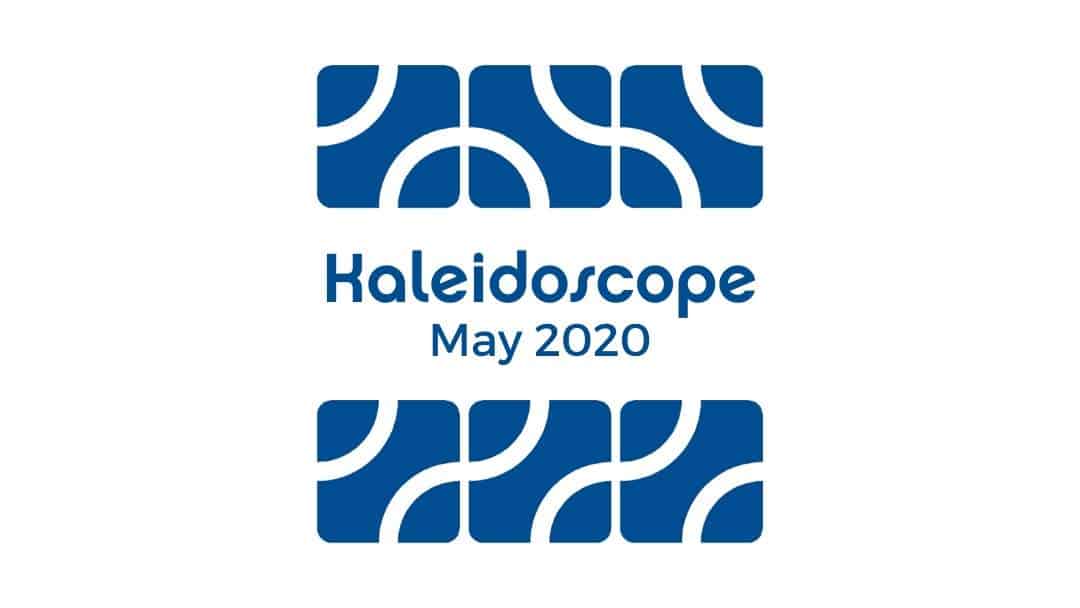
by Renee Owen | May 26, 2020 | Blogs, CEO's Kaleidoscope, Director's Blog, Home Page News, Publications
Time
Time, during isolation, has taken on a new dimension. It seems to have life of its own, sometimes dragging us along on its adventures, other times dragging us down into the abyss.
April lasted for months, and suddenly, now it is time to graduate!
Since the beginning of time, humans have marked its passage with ritual. Ritual helps us to set the rest of our life aside and honor the present moment as the most important time. Although we cannot conduct our beloved graduation rituals together this year, my wish is that your family set time aside during graduation day so your child can feel how important this time in their life is. Every child experienced this time of learning in isolation differently. Some resisted, some suffered, some thrived. Your child, in their own special way, accomplished something challenging during this unique time in history, and they will be recognized.
I, too, am ready to graduate. I have been at Rainbow for 13 years, coincidentally, the same amount of time as a K-12 education. Rainbow has been the best education of my life, and it’s time for me to take what I have learned and serve in a new way: I will be a professor of educational leadership at Southern Oregon University.
While it turned out to be an odd time to transition Rainbow’s leadership, I hope you have found the process to be seamless. During these last two months I have been functioning in a consulting/advising role, while Susie Fahrer guides Rainbow through the complex decisions of our time. I am in awe of her ability to attend to every detail, graciously and patiently caring for everyone’s needs, while never losing sight of the larger picture. Susie’s vision is powerful, her intellect supreme, and her integrity is impeccable. She is my hero. The Spirit of Rainbow celebrates her as the new Head of School.

The Spirit of Rainbow
Our Board President, Stewart Stokes, sometimes makes a reference to “The Spirit of Rainbow.” This could mean the personality of Rainbow, or what is special about Rainbow; but Stewart is referring to an actual living entity, a soul. Rainbow is many things. Rainbow is you and me, the teachers, and all the children. It is a holistic philosophy and curriculum. It has a mission and a purpose. It is a physical place with buildings, gardens, and beauty. It is a community. Rainbow is all these things combined into a magical alchemical mixture that is transformed into so much more than the sum of its parts. The Spirit of Rainbow is a living, loving force.
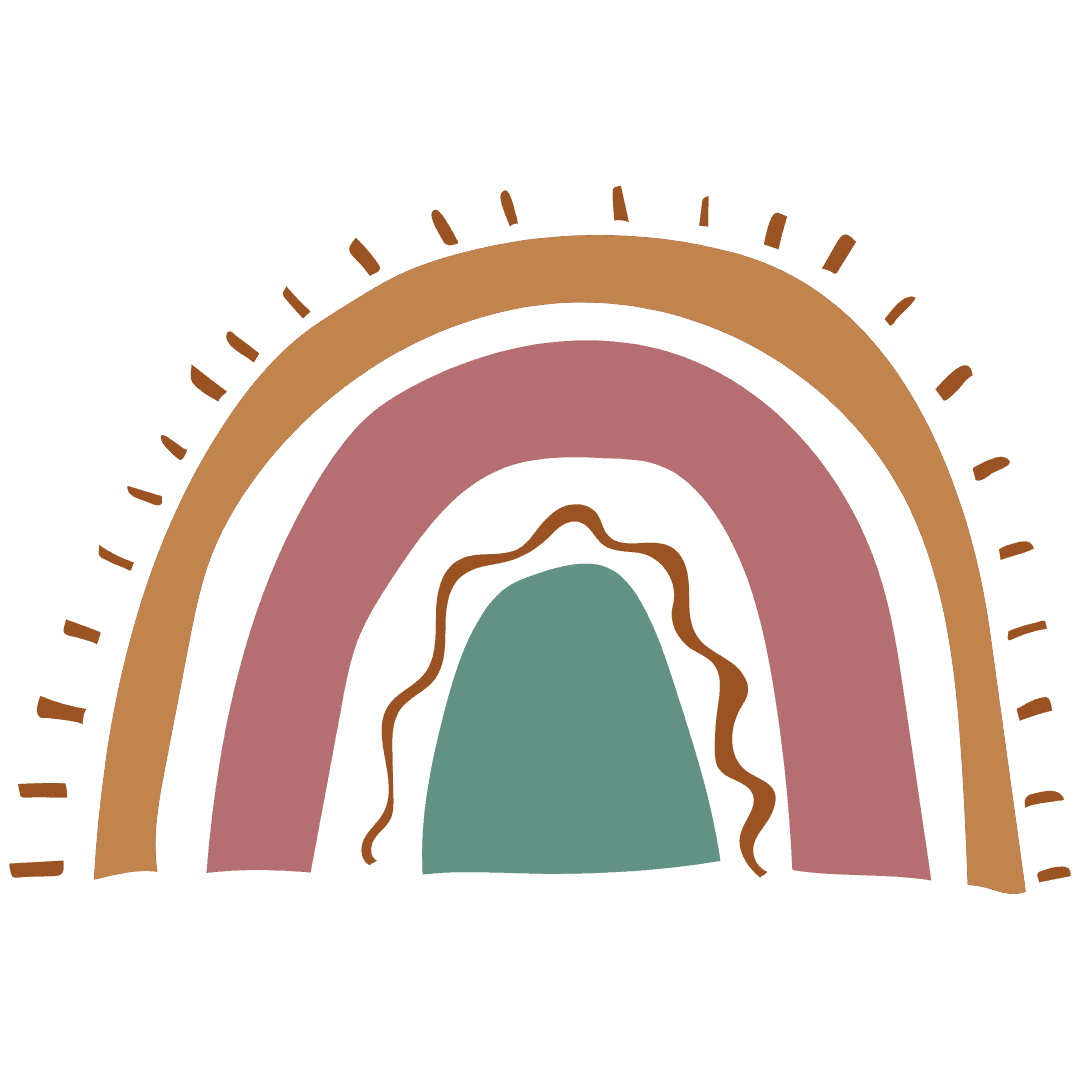
Rainbow’s Heart Beats Strong
A Rainbow education is truly an education of the heart…and certainly not just for the children, but for each of us. Many times, in my tenure as executive director, I have acknowledged that I was learning at least as much as the children. Lessons of the heart. Part of the beauty of Rainbow as a living force, is the reciprocal nature of learning. The more the adults—teachers, parents, staff—are learning, the more the children are learning. We shine a light on one another (sometimes on the places we don’t want anyone to look). We support one another in allowing our hearts and minds to grow.
Dr. Arrien is an indigenous anthropologist who describes the heart as having four chambers: full, open, clear, and strong. Below I use the four-chambered heart as a metaphor to describe the most important lessons I have learned at Rainbow, and what I believe every child learns when they receive a Rainbow education.

Full-heartedness
This first chamber of the heart concerns “fullness.” When my heart is full, I am giving all of myself to the task at hand. I am present to whomever I am with—fully listening and caring for those who need me. Energetically, I am not holding back, or meting out what I have to give, for there is an abundance, a well-spring of brilliance, labor, and care that flows through me when I give fully. At Rainbow, I learned to recognize when I am being half-hearted, the opposite of full-hearted, a sign that I need to change or refuel until the spirit can freely flow through me again.
Thank you, Rainbow. My heart is full.
Open-heartedness
When I am closed-hearted, either my heart has shrunken, being too focused on the material world and all of its distractions and demands. Or, I am defensive, hoping no one sees my shadow. Thich Nhat Hahn calls it the illusion of separation: when I am closed-hearted I forget that I am intricately interconnected with all of nature and all beings—and what is good for all is also good for me. Rainbow has taught me that when I am most fearful, most striving, most worried about me—that is when I most need to open my heart—to be love and to allow myself to be loved.
Thank you, Rainbow. My heart is open.
Clear-heartedness
Sometimes life is overwhelming and chaotic. When I forget about the magic and magnificence of life, I try to control it. I think I have the power to accomplish all of my goals as if life is a big machine that needs me, its master, to run it. But it goes faster and faster, and soon it becomes impossible to keep up; fear tells me I can’t let go. However, when I listen to my heart, I have faith that when I let go, my true direction will become clear, creative solutions will arise, and I will move forward with ease. When life is uncertain (like these current times) and when I am confused, I have learned to be patient. Dr. Dan Siegel says that “a synonym for uncertainty is possibility.” Therefore, I wait for clear direction.
Thank you, Rainbow. My heart is clear.
Strong-heartedness
The final lesson of the heart is the most important. I believe that each of us is born with the capacity to be in harmony with the world around us. When we are strong-hearted what we are experiencing on the inside—our values, beliefs, thoughts, and emotions—is in alignment with what we say and how we behave on the outside. But from the day we are born, our physical needs and our social conditioning leads us away from our strong heart. When we are weak-hearted, we say one thing, but mean another. We make commitments that we don’t agree with—sometimes taking our life down a path that is further and further from the sacred. But when we are strong-hearted we have the courage to be our authentic selves. We speak Truth. We act with Integrity. The theme of Omega Middle School is, “Know thyself.” Indeed, your courageous, heart-centered Omega adolescents have often shown me what it means to be real.
Thank you, Rainbow. My heart is strong.
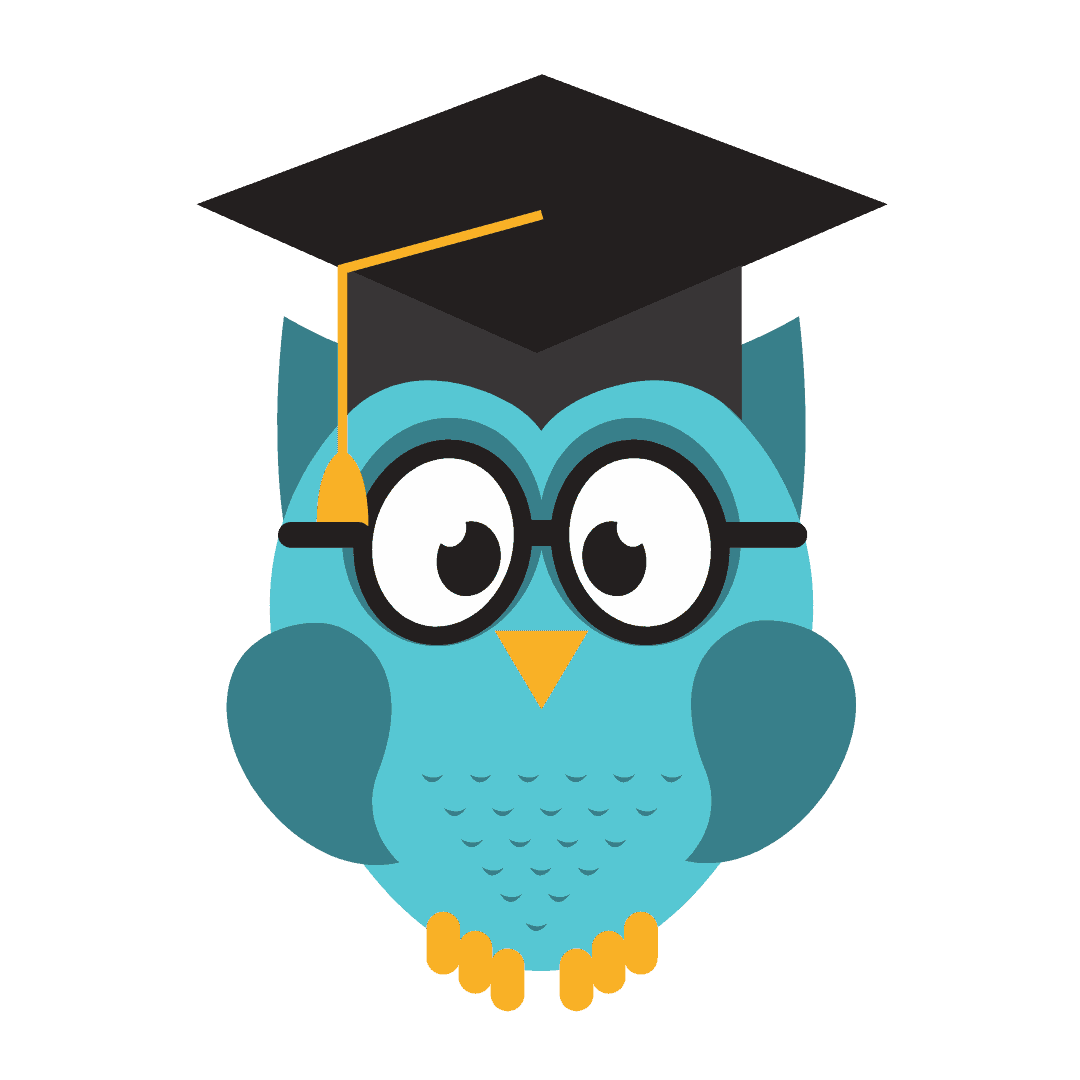
To our parents:
In a world that has gone wrong in so many ways, your children are blessed to be in a learning community where the lessons of the heart are taught—where love is the central component of their education, where they learn to pay attention to what their heart is saying so they “know themselves” before going out into the world. My parting advice is to do everything you can to make sure they complete that journey. As I often point out, heart, whole, and to heal all have the same root meaning. An education of the heart makes the human whole. It is an education of wellbeing. Teach your children well. Give them an education of the heart.
June 5 is my last day as Executive Director at Rainbow Community School, but my connection to the Spirit of Rainbow, like all things of the heart, is timeless and beyond the limitations of physical space. I believe that any spark I have added to Rainbow will continue to be kindled and kept alive after I am gone. Reciprocally, Rainbow, and the lessons I have learned here, will live on in my heart.
I love you.
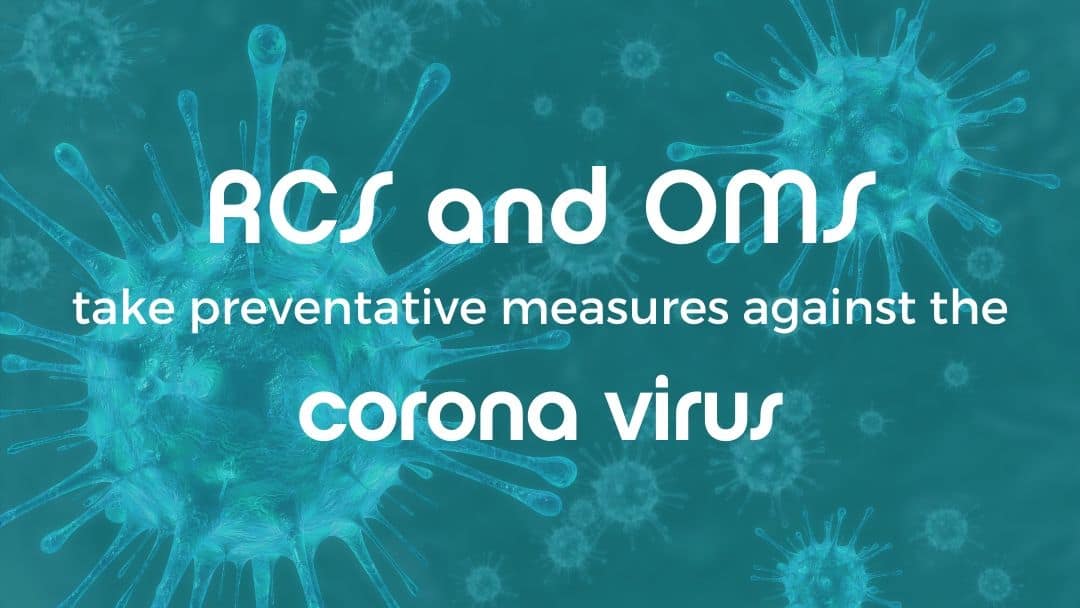
by Renee Owen | Mar 3, 2020 | Blogs, Home Page News, News
Rainbow Community School and Omega Middle School has been closely monitoring developing information about the new coronavirus, COVID-19. This letter is to share with you the steps we are taking to prevent the spread of coronavirus; and the steps we are preparing to take if there is an outbreak in our community.
Take a moment to read the letter we have sent to our community:
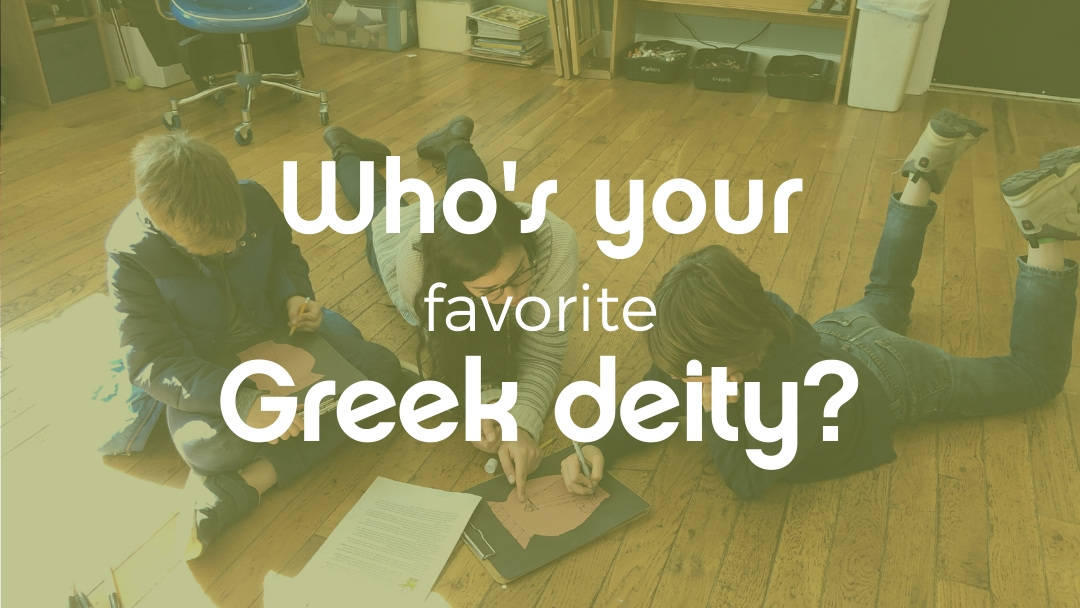
by Cynthia Calhoun | Jan 28, 2020 | Blogs, Home Page News
Fourth graders figure out their favorite Greek deity
We headed over to 4th grade recently where our students were immersed in the world of ancient Greece. They learned about mythology and creative arts. Their teacher, Kurt, said they really loved learning about the Greek gods and doing hands-on activities related to their learning.
Because of that, Kurt let them do a special activity that would further their learning with Greek mythology. They investigated their favorite god by reading a story, and created designs using paper shaped like pottery. These designs were based on what they knew about the deity they studied.
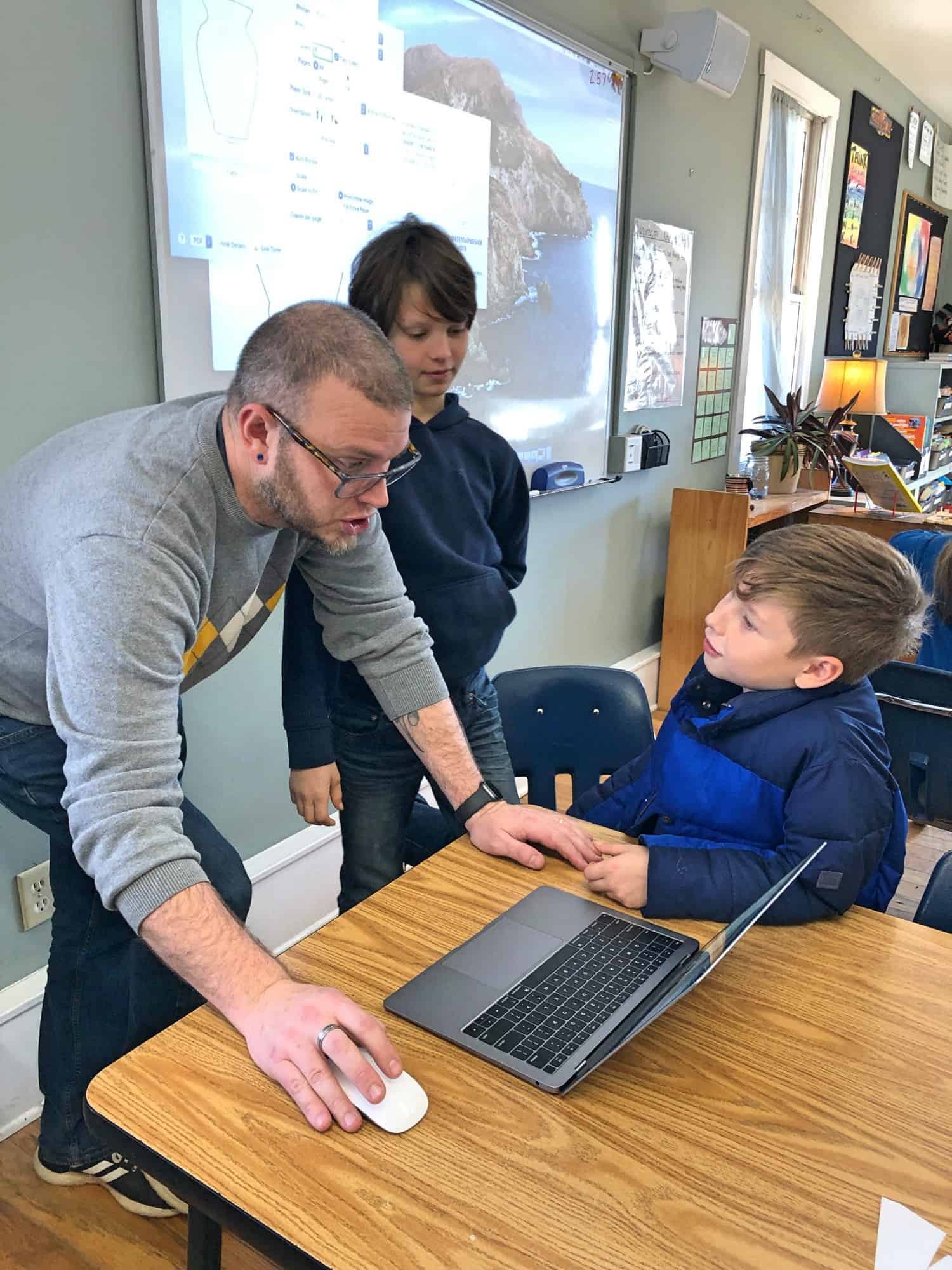
Hercules – probably the most famous Greek deity
They started off their lesson with a short video about Hercules. They talked about how the story of Hercules is from long ago when “chaos reigned.” Students realized there were many references to pottery and design, as well as other historical events.
Greek Pottery
Fourth graders had a chance to look at examples of ancient Greek pottery. They saw references to Achilles, a centaur, minotaur, war and peace, Hercules and more. Once they had a chance to look at different examples, their teacher explained that stories they were about to read would also inform the designs they’d create on their pottery.
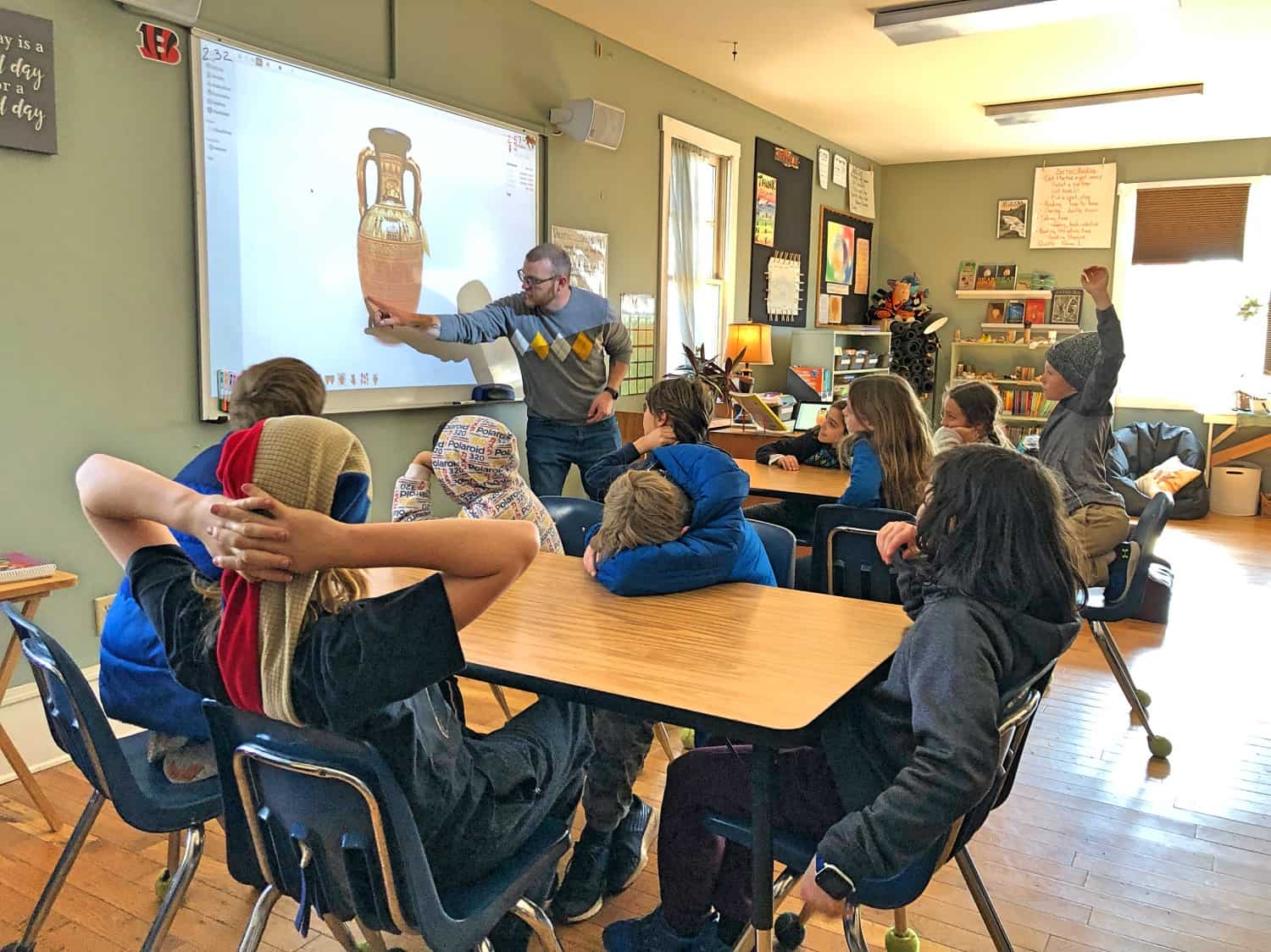
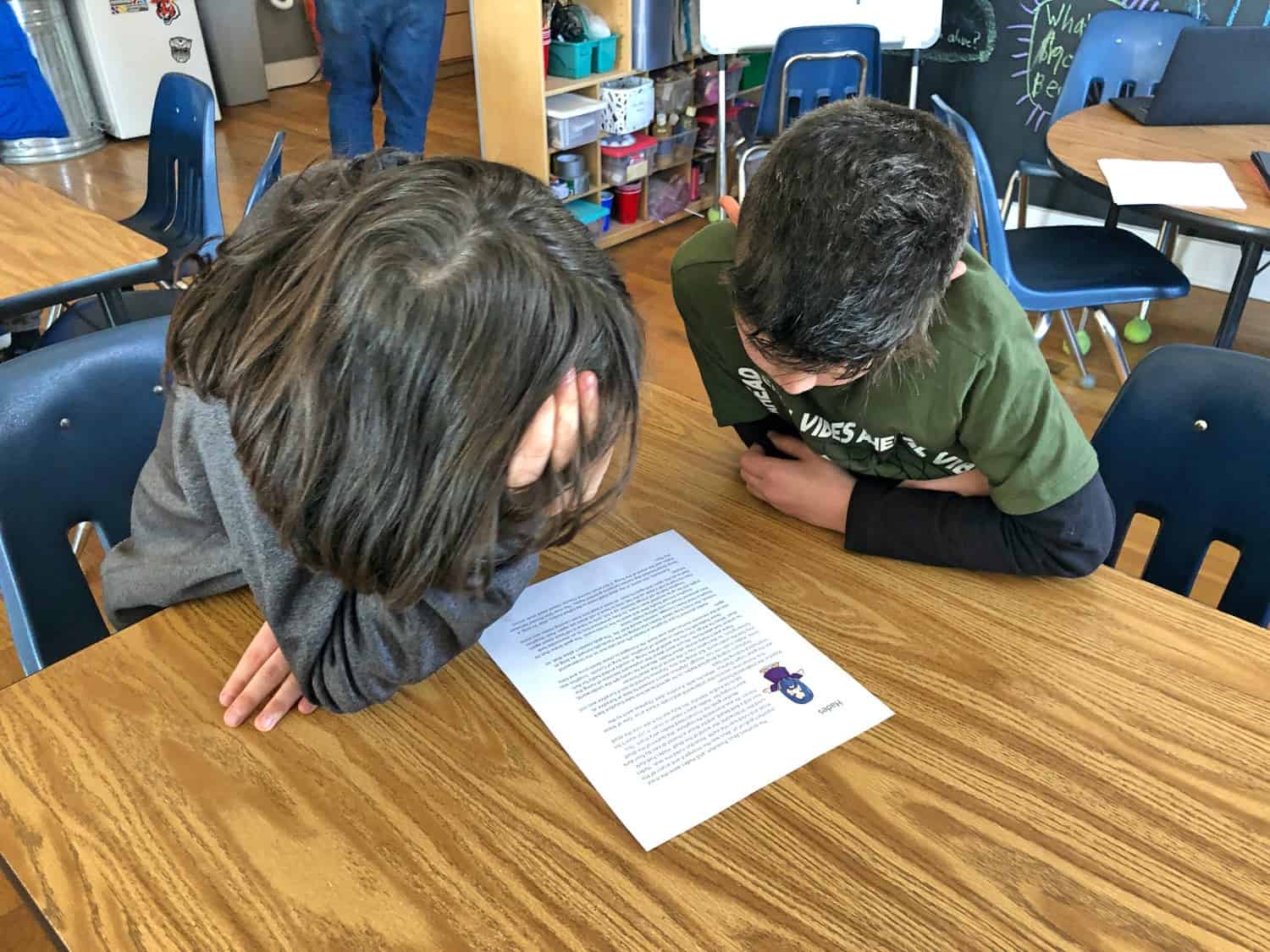
Stories about Greek gods
Each student paired up with another and chose their favorite Greek deity to study. They were allowed to read the story to each other, silently, or alternate between silent reading and reading aloud as they liked. Once finished, each student created their paper pottery. Essentially, they created a stencil using one piece of paper, cut it out, and finally glued it onto paper with a brown background.
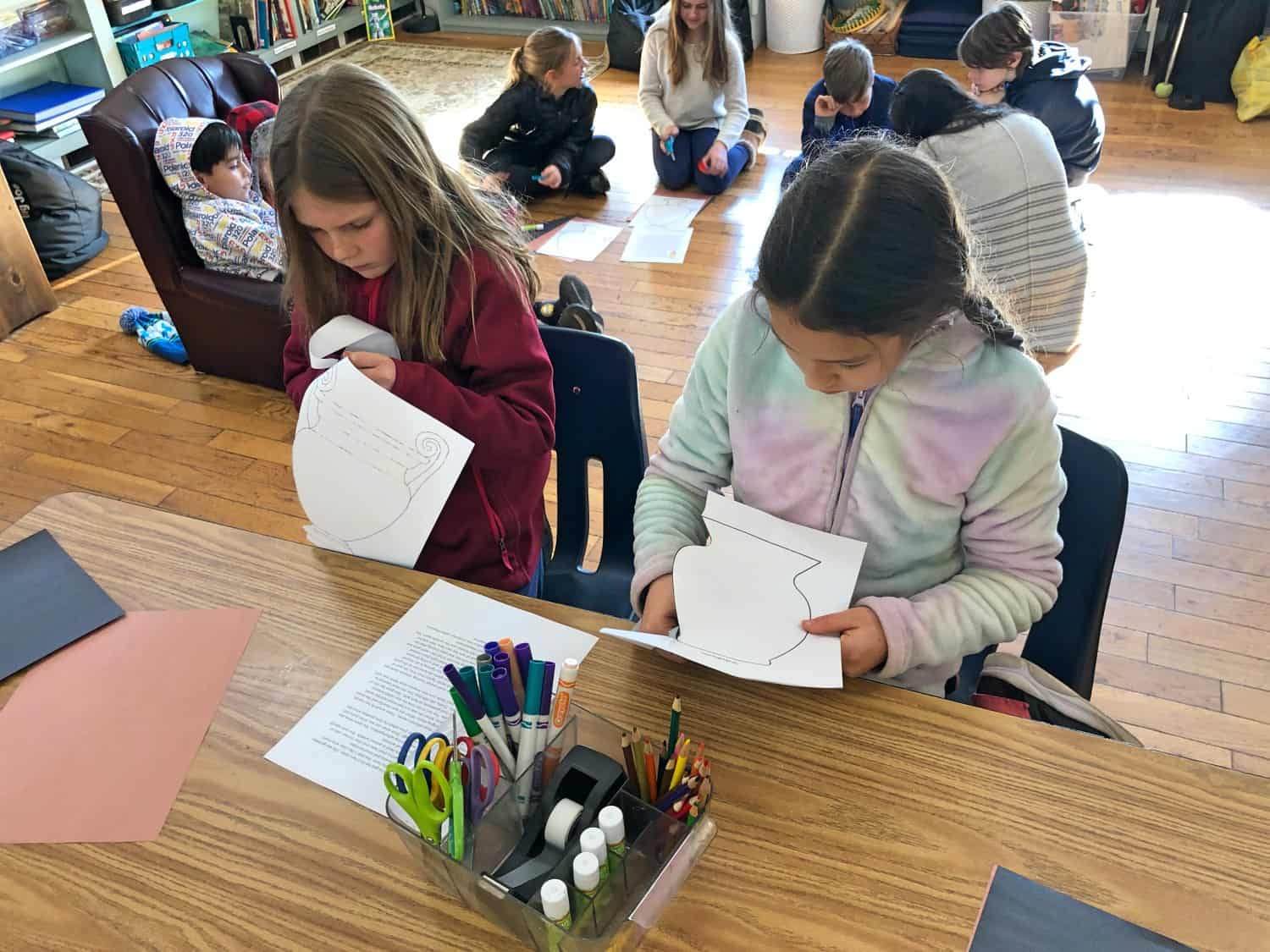
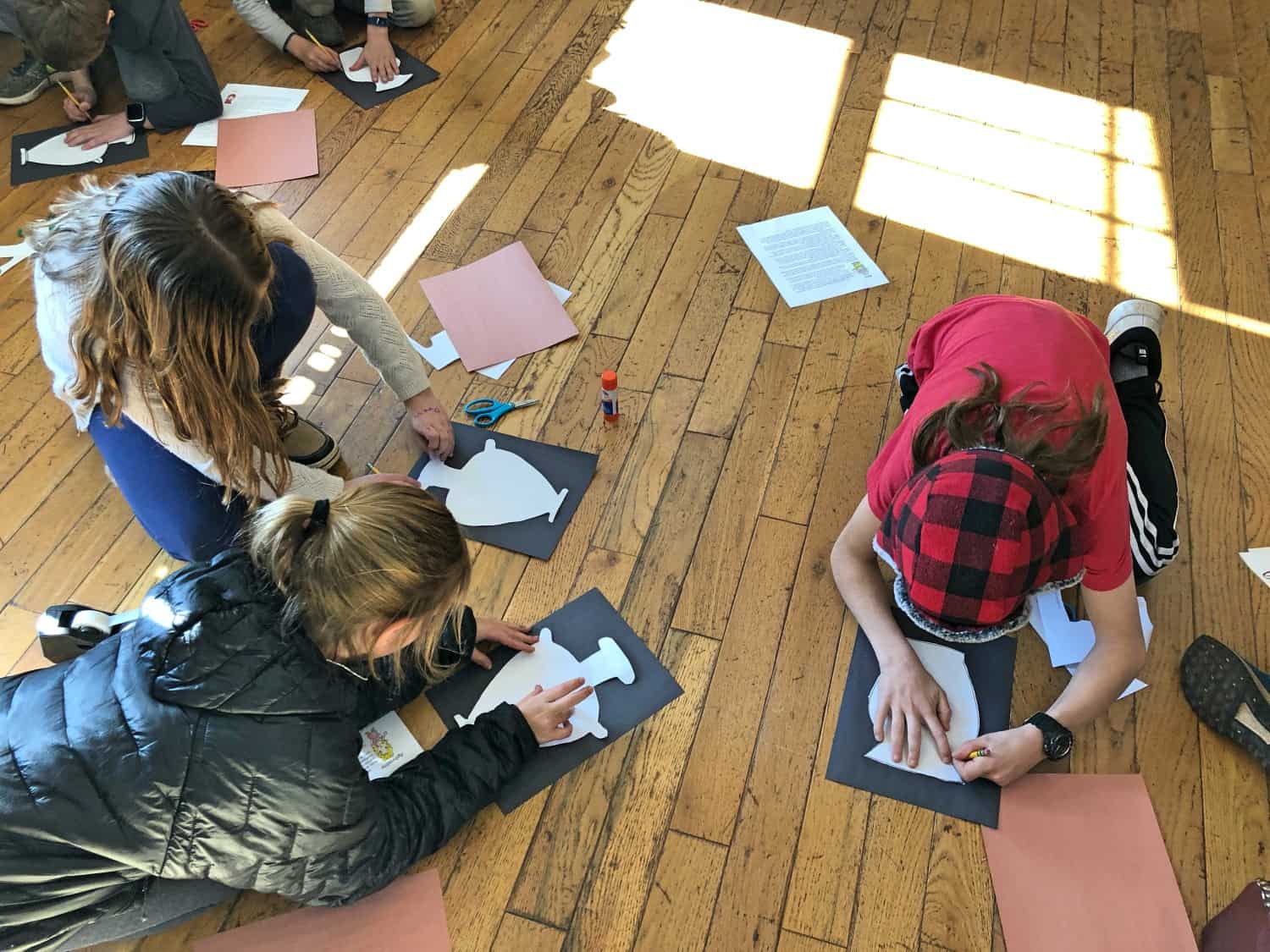
After students finished gluing their stenciled piece onto the background, they could begin drawing designs. They worked with pencils and black markers. Some designs were quite eloquent and detailed. One requirement was to reference the story they read within their pottery design.
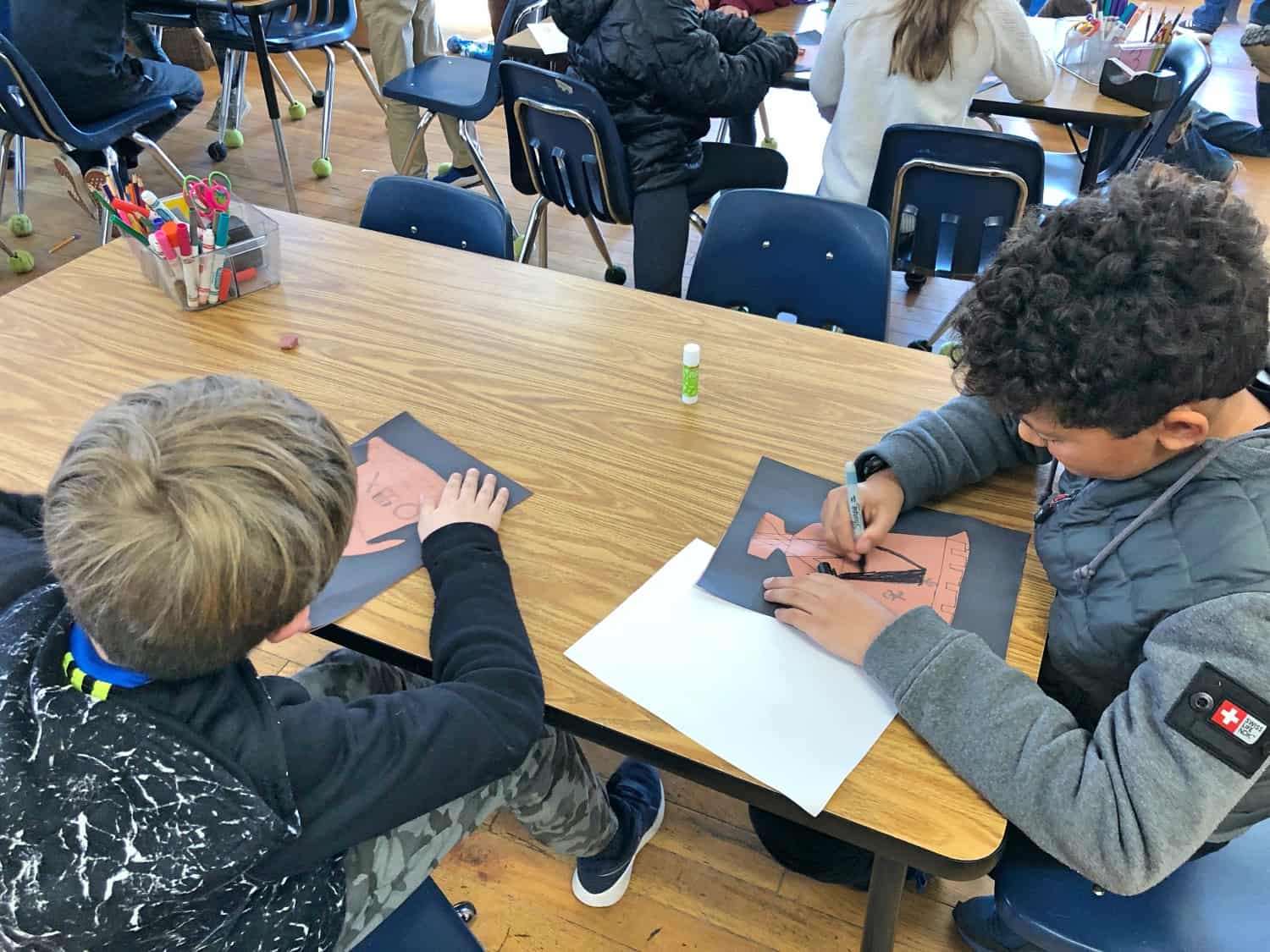
These pottery designs complemented the rest of their unit on Greek mythology. Intricate and detailed, each pottery piece reflected each student’s drawing style. As students concluded the unit, they did further research on their chosen Greek god. This research led to a one-page report, which they later presented to their class.
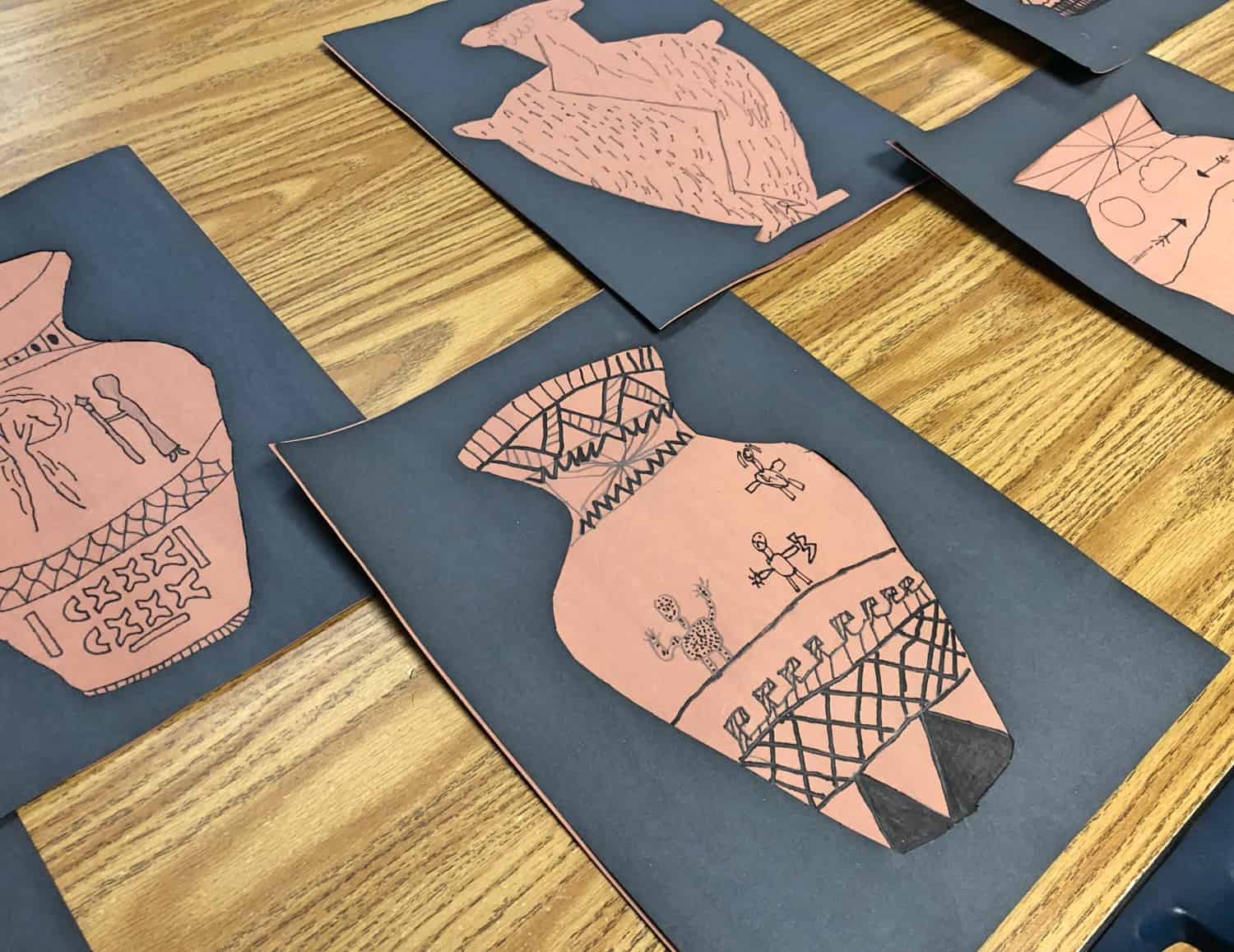
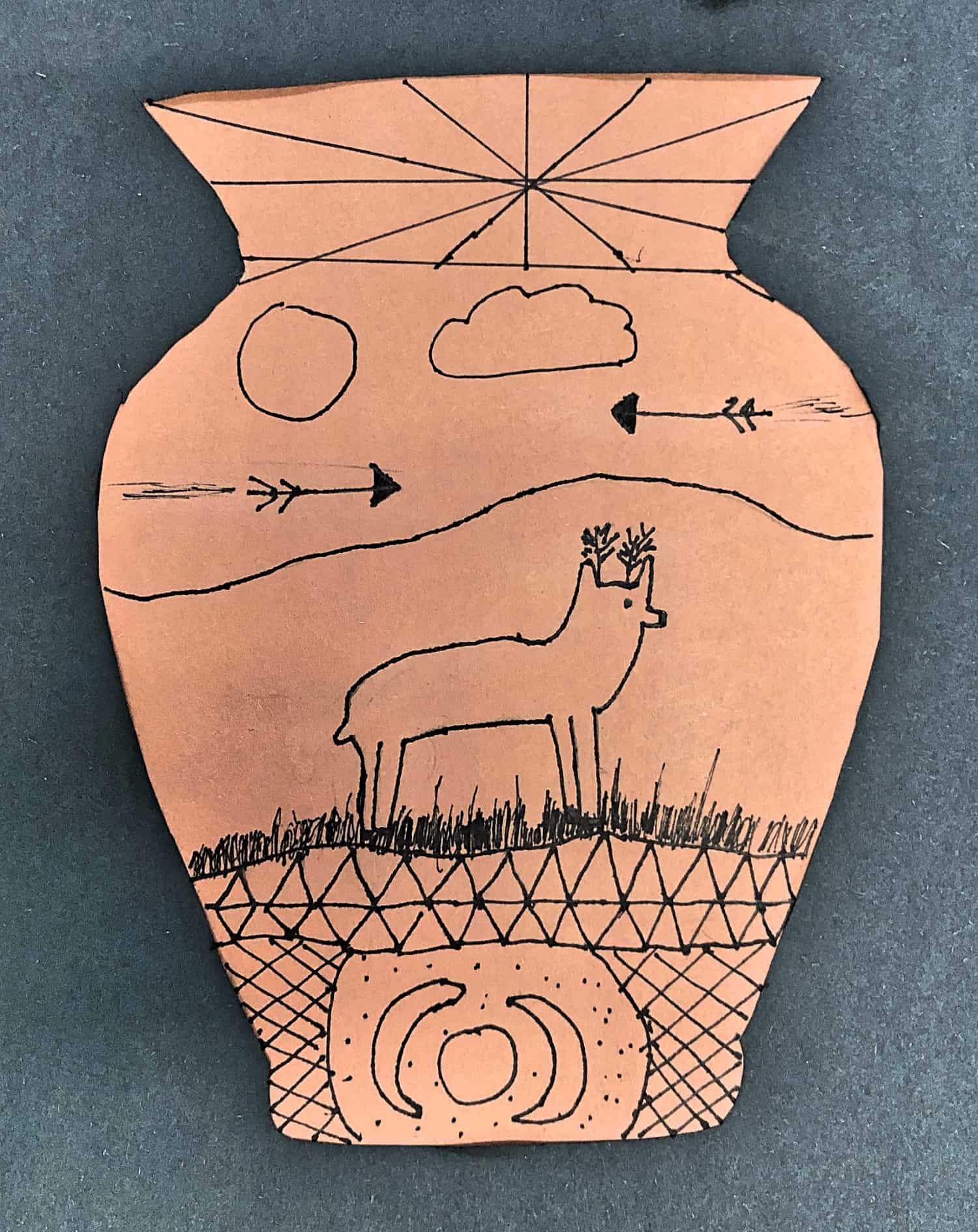
This one lesson touched on several different domains: the social and emotional, in which students were able to collaborate with one another, and worked together to complete their stories and pottery projects. They engaged in the mental domain in researching more about Greek deities. They were able to use the creative domain with their pottery designs and even touched on the spiritual domain with regard to Greek beliefs and mythology itself. All teachers at Rainbow create units that incorporate the seven different domains at least once.
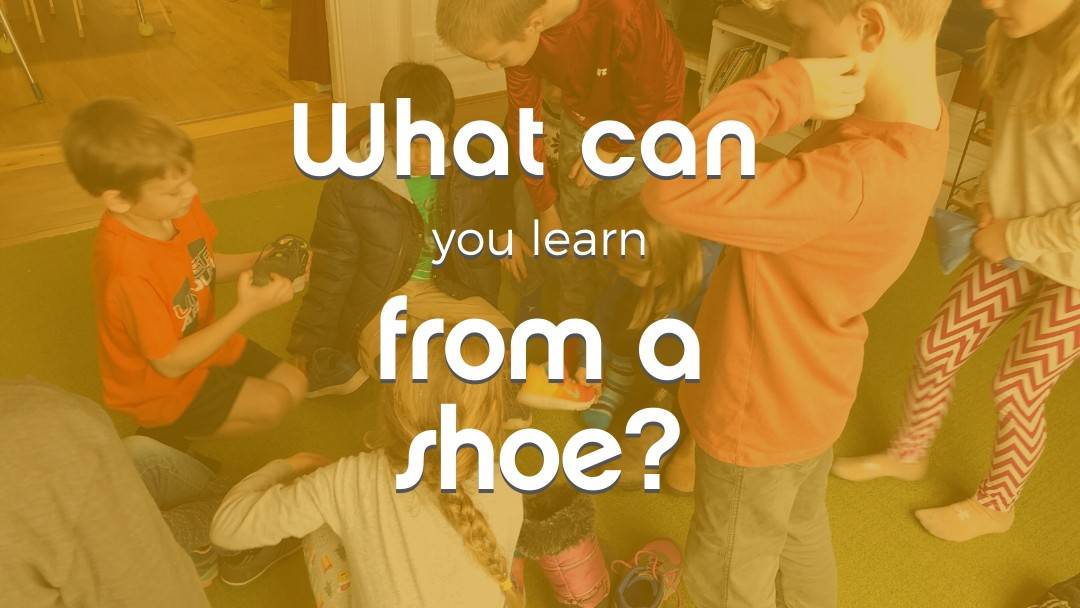
by Cynthia Calhoun | Dec 9, 2019 | Blogs, Home Page News
Classification of shoes to teach valuable lessons
We headed to second grade recently to find students doing classification of…shoes! There is a very interesting reason why.
As students started out this lesson, they began with some silent reading time. These quiet moments helped get them ready for what was next.

It was so quiet you could hear their minds “thinking.” Little did they know, they would need their sharp minds and their shoes for the subsequent portion of their lesson.

Their teacher, Eddy, had them take their paired shoes and separate them. They put one on the checkered green rug in their main classroom, and the other on the green rug in the library/centering room.
Classification of shoes in different ways
The kiddos separated into two groups with the following instruction: to group or separate the shoes according to a system they would create. In other words, students could separate shoes by color, brand, size, or some other determining factor. They brainstormed different ideas of how they might classify their shoes within their groups.

Each group chatted and came up with a plan that all could agree with and implement.

Neither group had any idea how the other was classifying their shoes. However, they each came up with very different ways of grouping and organizing their shoes.

In the library room, students grouped shoes by their overall color. In the main room, students grouped them by how they “closed” or secured to the foot, such as with velcro, slip-on, shoestrings, etc.

Once they did that, their teacher asked them to reclassify their shoes and come up with a second way to group them all. Students in the library decided to group by the “purpose of the shoe,” such as hiking or running. The other group classified all the different shoes by size.


Why classify shoes?
Why would students do this?
They brainstormed about labeling and classifying things to make sense of the world and understand it better. Eddy asked them, “aren’t there lots of different kinds of trees?” All students agreed that there were. He asked them about animals, plants, and seeds. Everyone agreed that, yes, there are many different varieties of each of these. It is in classifying and grouping plants, animals, and seeds, humans can identify what they are and understand what they do and their role in the world ecosystem.
Learning about the animal kingdom
After everyone got their shoes back, they began talking about the scientific system of classification. They learned about the five main kingdoms of living things: plants, animals, fungi, bacteria (monera), and one-celled organisms (protists). Later, they went more in-depth with the animal kingdom. Eddy gave each student a piece of paper with the name of an animal on it. Each student had to determine if the animal they had was a mammal, reptile, amphibian, fish, or a type of bird. Some of them were tricky! Did you know that a whale is a mammal? Or that a skink is a type of reptile?

Students walked away with a broader understanding of why people classify the world around them. They explored a number of ways in which it’s possible to do so. What a fun way to use methods of scientific thinking to reason, deduce, classify, as well as integrate other skills such as collaboration, discussion and reaching a consensus.
We love how Eddy integrated elements of the 7 Domains. Students were able to move around the classroom. They worked together to complete their tasks which reinforced the social domain. This process of reasoning and classification touched on the mental domain. Talking about organisms in nature brought in the natural domain. One lesson with multiple approaches. That is a day in the life of a Rainbow student.




































